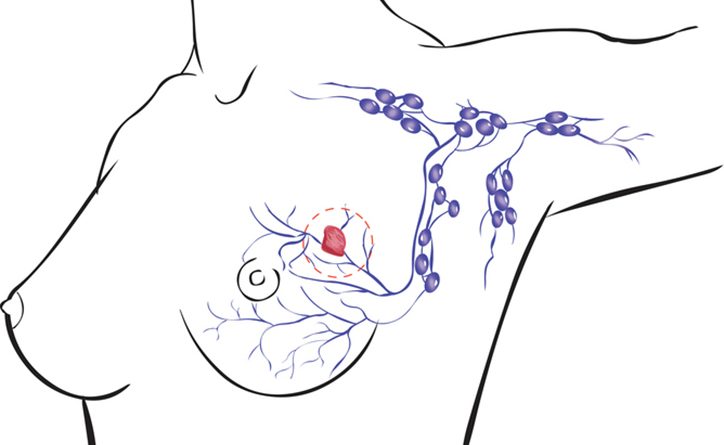Hormones like estrogen and progesterone are chemicals produced by glands in the body. Normally, these hormones help regulate body cycles, like menstruation. However, sometimes these same hormones can cause cancer to grow. The pathologist will perform tests on the breast cancer cells to determine if they have receptors that feed on estrogen or progesterone, stimulating their growth. If the cancer cells have these receptors, your doctor may recommend hormone therapy drugs, such as blockers or inhibitors. Both types of drugs help to destroy cancer cells by cutting off their supply of hormones.
What are Hormone Inhibitors and How Do They Work?
The most common hormone therapy drug is Tamoxifen. It blocks the estrogen-shaped openings in the cells, preventing estrogen-fueled cancers from growing. Tamoxifen can be taken as a pill on a daily basis, up to five years after surgery.
Hormone inhibitors also target breast cancer cells with hormone receptors, but unlike hormone blockers, they work by reducing the body’s hormone production. When breast cancer cells are cut off from the estrogen supply the tumor begins to starve and die.
Generally, the benefits of using hormone therapy and chemotherapy together have a much greater combined effect than using either alone. If your breast cancer is positive for hormone receptors, your doctor may recommend both therapies.
Options Before Menopause
If you have not gone through menopause, the options include:
- Tamoxifen: This drug can prevent the original breast cancer from returning and also helps prevent the development of new cancers in the other breast or growing elsewhere in your body in the future. It’s in pill form and must be taken every day usually for 5 years. In general, the side effects of Tamoxifen are similar to some of the symptoms of menopause. The most common are hot flashes and vaginal discharge. Others are irregular menstrual periods, thinning bones, headaches, fatigue, nausea, vomiting, vaginal dryness or itching, irritation of the skin around the vagina, and skin rash. Serious side effects are rare, but they include blood clots, strokes, uterine cancer, and cataracts.
- LH-RH Agonist: This type of drug can prevent the ovaries from making estrogen. The estrogen level falls slowly. Examples are leuprolide and goserelin. This type of drug may be given by injection under the skin in the stomach area. Side effects include hot flashes, headaches, weight gain, thinning bones, and bone pain.
- Surgery to Remove Your Ovaries: Until you go through menopause, your ovaries are your body’s main source of estrogen. When the surgeon removes your ovaries, this source of estrogen is also removed. (A woman who has gone through menopause wouldn’t benefit from this kind of surgery because her ovaries produce little to no estrogen.) When the ovaries are removed, menopause occurs right away. The side effects are often more severe than those caused by natural menopause but taper off with time. Your oncology team can suggest ways to cope with these side effects.
It is important to note that if a patient receives LH-RH agonist treatment or has her ovaries surgically removed, she will likely be placed on an aromatase inhibitor instead of Tamoxifen, but both remain options.
Options After Menopause
If you have gone through menopause, the options include:
- Aromatase inhibitor: This type of drug prevents the body from making a form of estrogen (estradiol). Examples are anastrozole, exemestane, and letrozole. Common side effects include hot flashes, nausea, vomiting, and painful bones or joints. Serious side effects include thinning bones and an increase in cholesterol. This is also a pill taken daily.
- Tamoxifen: Hormone therapy is given for at least 5 years. Women who have gone through menopause receive tamoxifen for 2 to 5 years. If tamoxifen is given for less than 5 years, then an aromatase inhibitor often is given to complete the 5 years. Some women have hormone therapy for more than 5 years.
More research is underway to determine if there is a benefit in taking hormonal therapy for longer than 5 years. Some research studies have demonstrated that there may be benefits in switching from one hormonal therapy agent to another during the 5 year period. Your oncologist will discuss with you the most appropriate hormonal therapy regimen based on your breast cancer pathology and age. It is very important to take these pills every day as without adhering to the daily schedule and dosage as planned, you may not reap the benefit of these drugs. Overall, hormonal therapy can reduce risk of recurrence by 50%.
Featured Image Source: Thinkstock/Hakan Corbaci




